It’s official. The Leica D-Lux 8 has been stripped of some useful features in the quest for “the essential” and the aim for conformity with other models in the range. Strangely, I noticed these omissions within ten minutes of picking up the camera, so I am no doubt focusing on the inessential. The primary missing functions are the popular step-zoom of the D-Lux 7, the zoom function on the lens and the operation-lock feature, which enabled users to lock a series of functions to avoid inadvertent changing of settings.
Das Wesentliche
Before discussing the missing options, I must say that I am generally in favour of Leica’s simplification programme under the banner of “Das Wesentliche”. Cameras (especially for cameras aimed at stills photographers) have become too complicated. Menus are a challenge to navigate, and the plethora of controls and function buttons grows with every redesign. I therefore welcome the new D-Lux 8 as a “Leicafied” version of the long-established compact range. The new menu system, the simplified controls and the subtle body changes are all a step in the right direction.
Nevertheless, there are limits, and I believe it is a mistake to delete really useful features for no good reason. Both the step-zoom and the lock features were high on my list of D-Lux 7 positives. Indeed, they are functions that I regard as essential rather than candidates for the guillotine. I was therefore disappointed (and rather annoyed) to find that both are missing from the D-Lux 8. In case you are new to the D-Lux range, here is a brief overview of the deleted functions:
Step-zoom
On the D-Lux 7 and previous models, there was an option to set the zoom lever to jump to traditional focal lengths — 28, 35, 50 and 75mm (full-frame equivalent, of course; the camera has a much smaller Four Thirds sensor). Furthermore, the camera could be set to resume the chosen zoom setting when waking up. Thus, it was possible to decide on the daily discipline of shooting at a fixed focal length, say 35mm or 50mm, and have the camera lens simulate that fixed focal length.

Using the step-zoom setting allowed the D-Lux 7 and its ancestors to be used as a fixed-lens street-photography camera. Choose 28 or 35 and the camera would behave like a Ricoh GR or Fuji X100. A good thing, I thought, and I am astounded that Leica considers it so unwesentlich.
The Leica D-Lux 8 and its zoom lever…
Sure, the step-zoom probably appeals mainly to established Leica users who are accustomed to thinking in prime terms. In common with many readers, I have a good understanding of what to expect at these established focal lengths, and I found the step-zoom facility on the previous D-Lux models surprisingly useful. And, what’s more, it was great fun. It added a touch of spice to using the camera.
There is also a more practical reason, since the focus ring on the lens can no longer be assigned to the zoom function. The zoom lever, which is concentric with the shutter button, is the only way of changing the focal length, and it is easy to overshoot a desired setting. Precision is difficult — try choosing 35mm or 50mm, just to massage your OCD, and your blood pressure will rise in sync with your frustration. The old step-zoom feature was so much better.
The D-Lux 7 and D-Lux 8 are zoom compacts. Yet Leica has removed all the zoom settings from the 8, apart from the use of the lever to zoom. The menu options for zoom customisation have been completely removed, and the D-Lux 8 is all the worse for it.
We have not yet been able to check the focus-ring zoom assignment with Leica, and we hope we are wrong. If the option is there, it is well hidden.
Operation lock
The operation lock feature (which is common to all Panasonic Lumix cameras, including the LX100, on which the D-Lux is based) enables one-button locking of a custom set of features. Again, I found this ability to avoid inadvertent fiddling with settings to be extremely useful. For instance, it solved the problem of accidentally moving a fixed centre spot focus point around the screen as a result of touching the screen or nudging the four-way pad.
Now, the D-Lux behaves just like the Q3, with the ever-present danger of moving the focus point. Even the SL3 now boasts a return-to-centre function (which can be assigned to a button). A double tap returns the focus point to the centre. And there is also a workaround solution which helps with the Leica Q3. We outlined the steps in an earlier article.
There has been pressure from many owners for some form of focus-point lock (and the more general operation lock on the D-Lux 7 achieved this objective). However, Leica has now removed a good feature, one that was already incorporated into the -7.
Leica’s essential response
We asked Leica’s press office for clarification on the slimmed-down capabilities of the D-Lux 8 and these are the responses we received by return.
Macfilos: Why has the step-zoom been deleted? This was a favourite feature on the D-Lux 7, but we can find no menu option for zoom functions.
Leica: This is due to prioritisation of other features, we wanted to focus on the essential.
Macfilos: Why has the useful operation-lock feature been deleted?
Leica: In order to remain in unification with the Leica camera line-up, such as the Q3.
Macfilos: Could any of the omissions above be added in a firmware update?
Leica: This is unlikely because everything mentioned above was a deliberate decision.







Sample images from the Leica D-Lux 8, taken in Konstanz, Germany
Is it worth upgrading to the D-Lux 8?
Several well-known Leica hands I’ve spoken to are not concerned by these changes. They agree with Leica that removing “unusual” features in the interests of “Das Wesentliche” is a good move.
Others share my frustration. Indeed, if you can do without the OLED viewfinder and the higher-resolution screen, the D-Lux 7 remains the better camera for enthusiasts. Sadly, this dumbing down is only going to give potential enthusiast buyers another excuse to choose an alternative.
What’s your view? Did you like the step-zoom facility on earlier D-Lux cameras, or did you never use it? Do you think it was a good idea not to offer a zoom function on the lens? Are you happy to lose features in exchange for “Das Wesentliche”. Let’s discuss below.
Want to contribute an article to Macfilos? It’s easy. Just click the “Write for Us” button. We’ll help with the writing and guide you through the process.

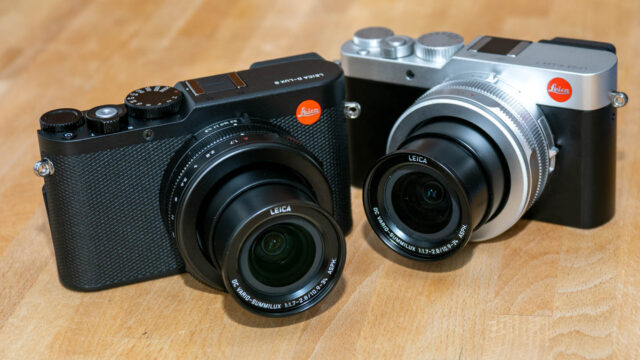
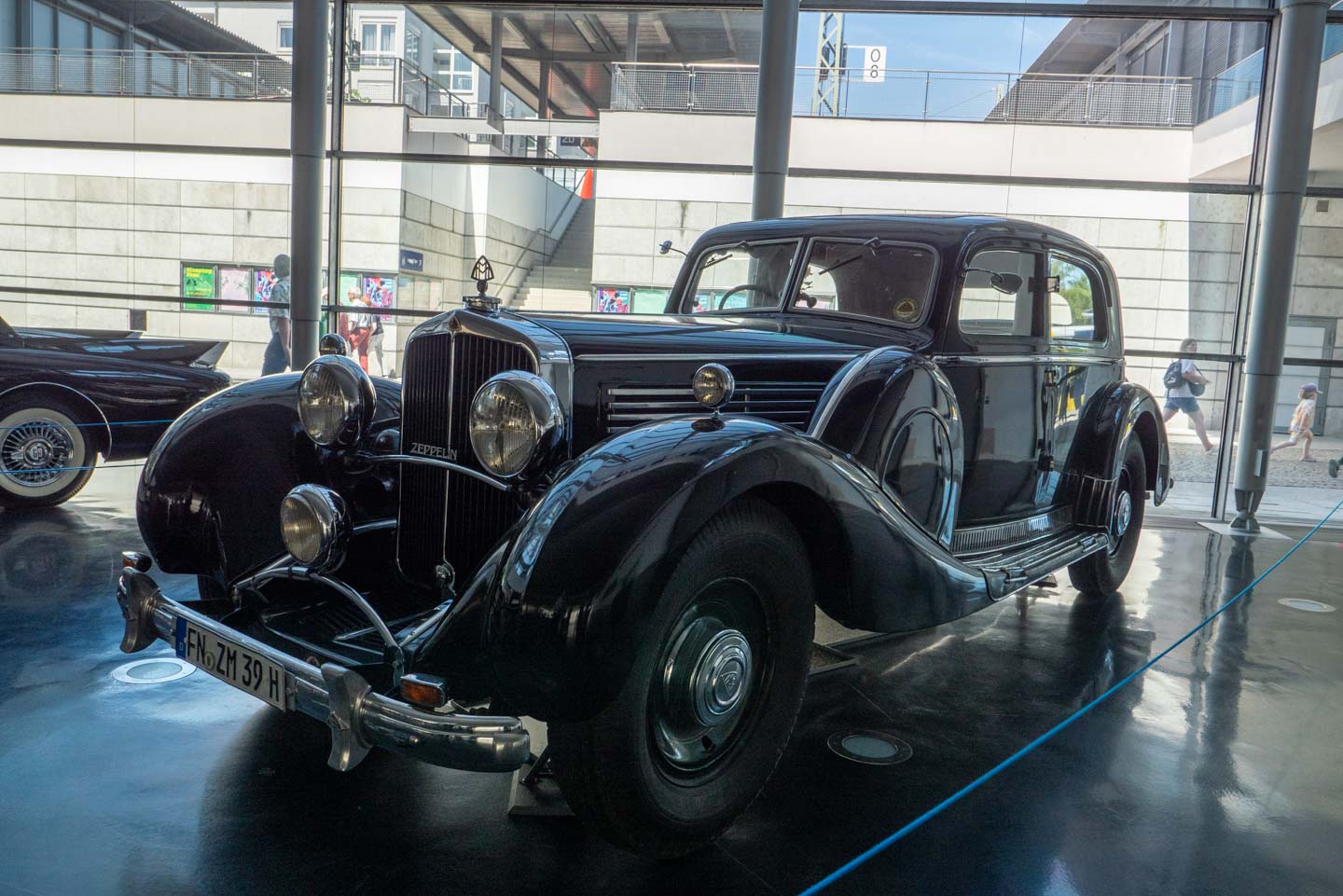
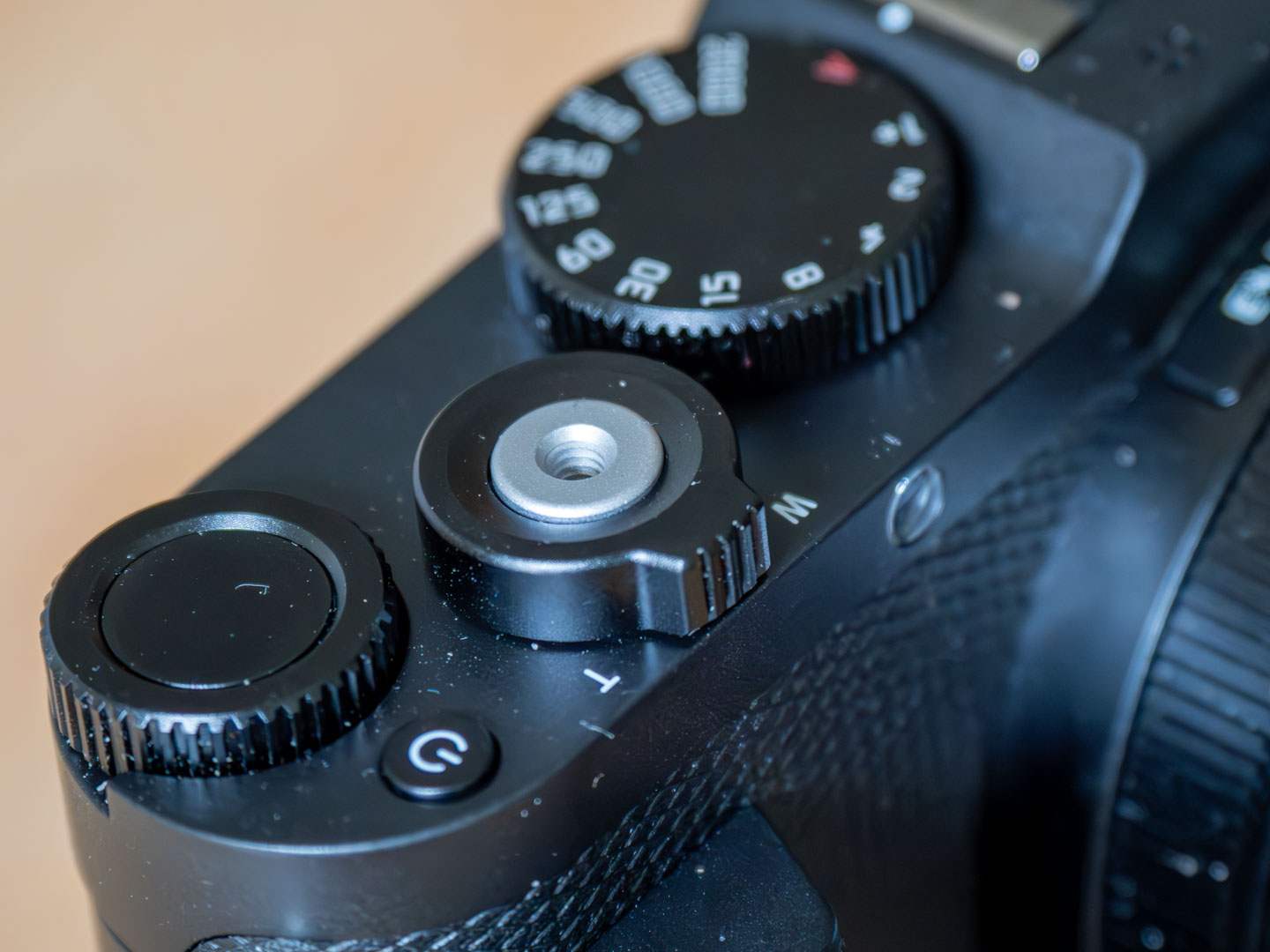
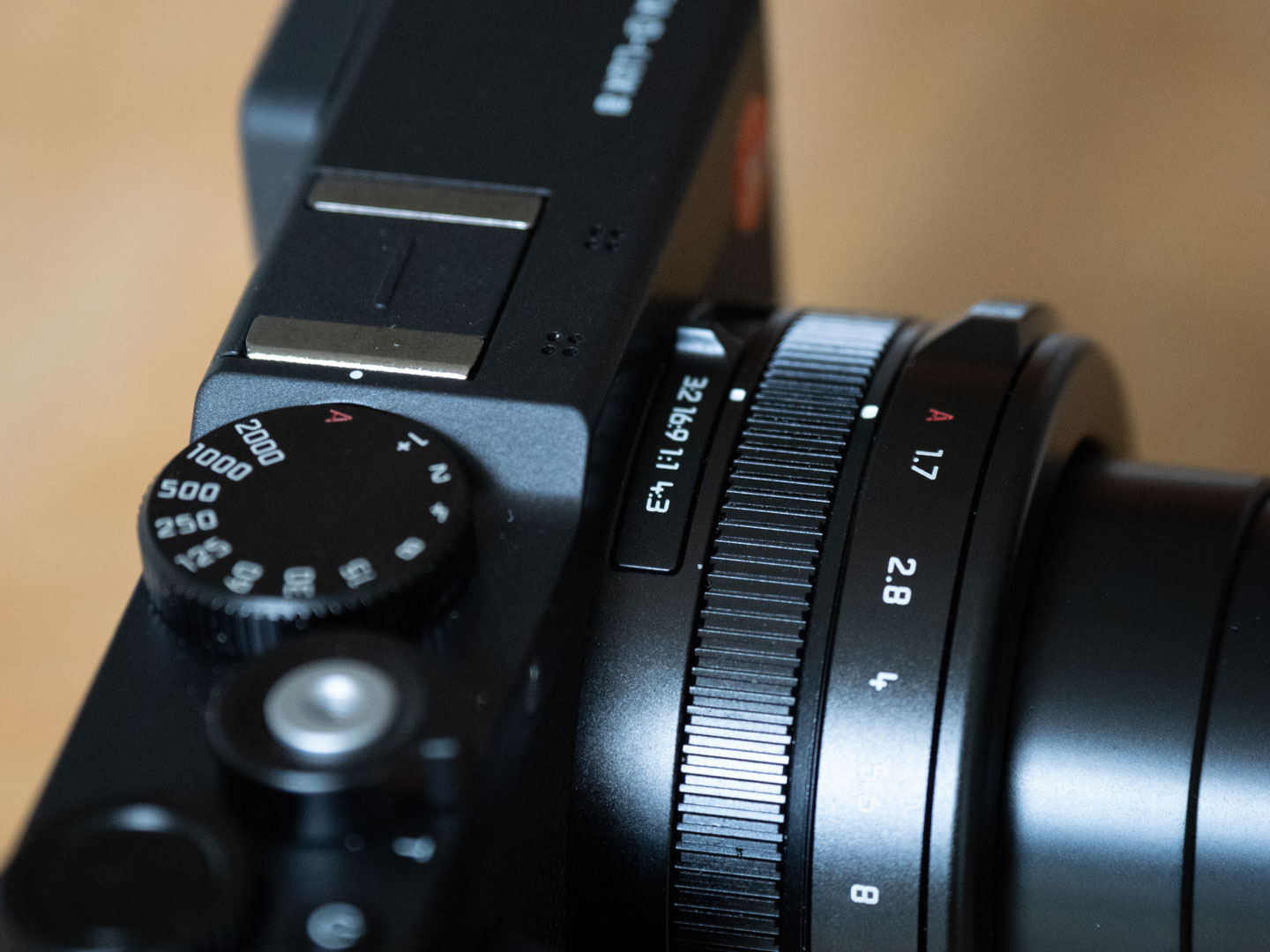
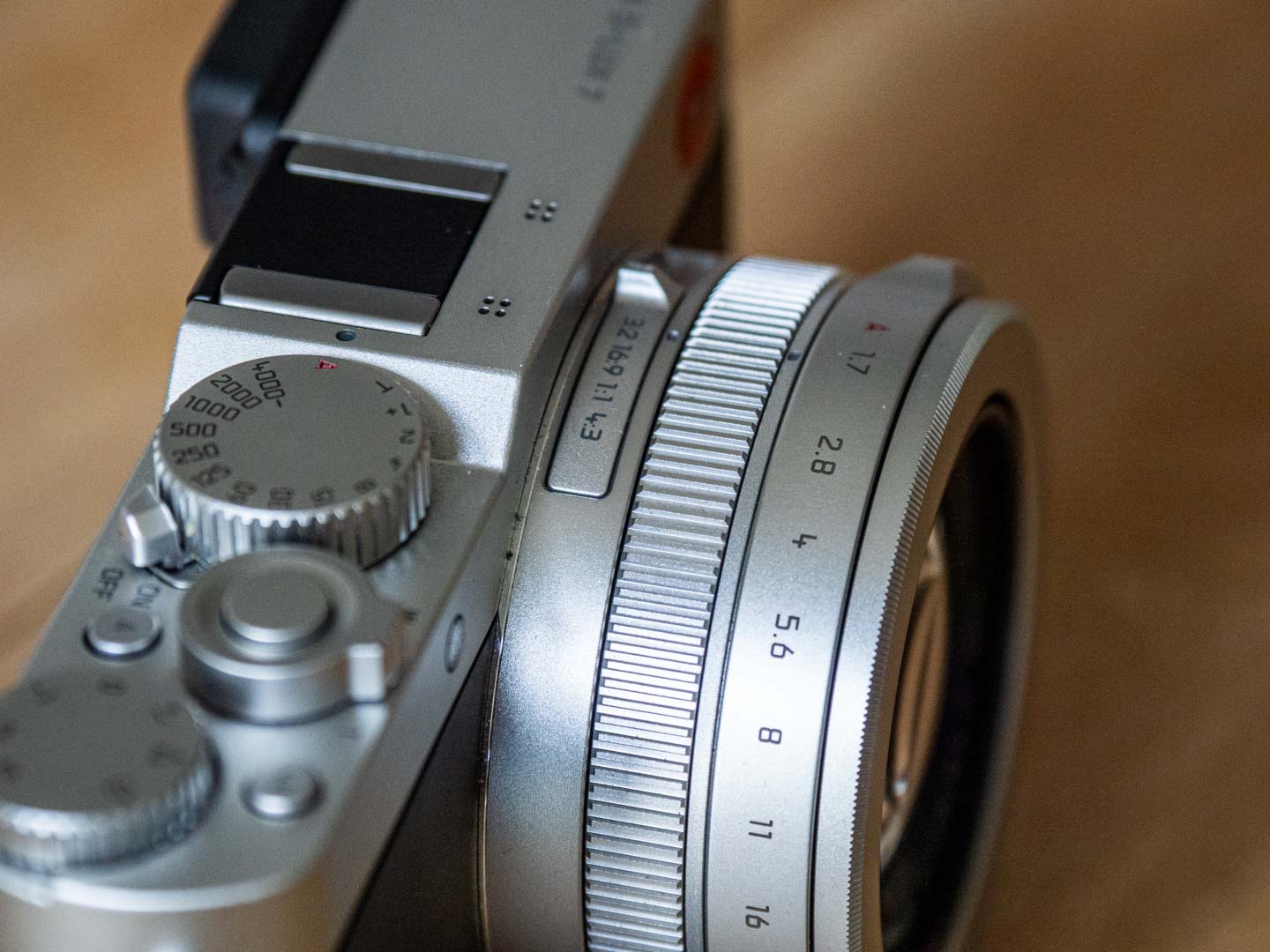
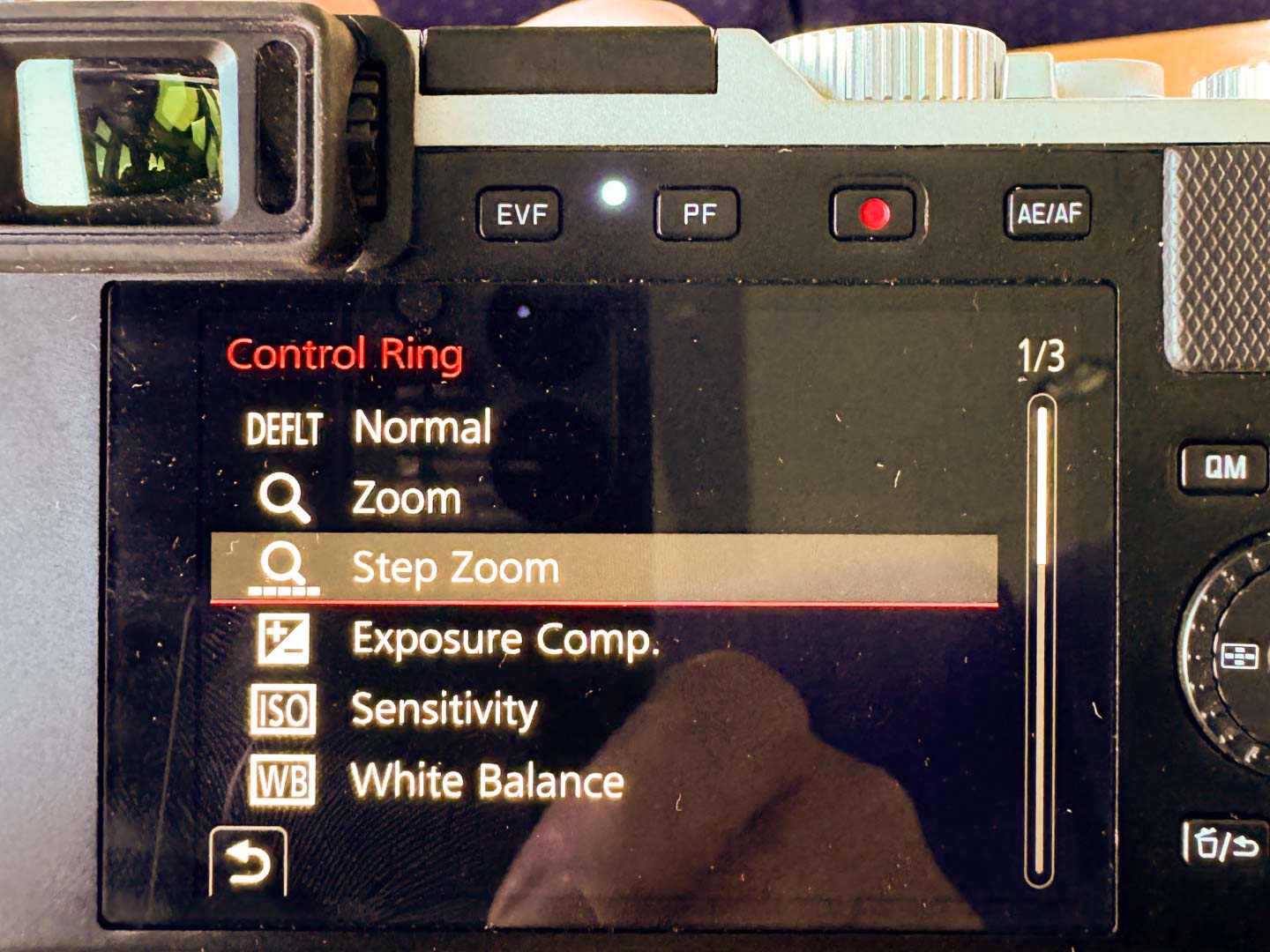
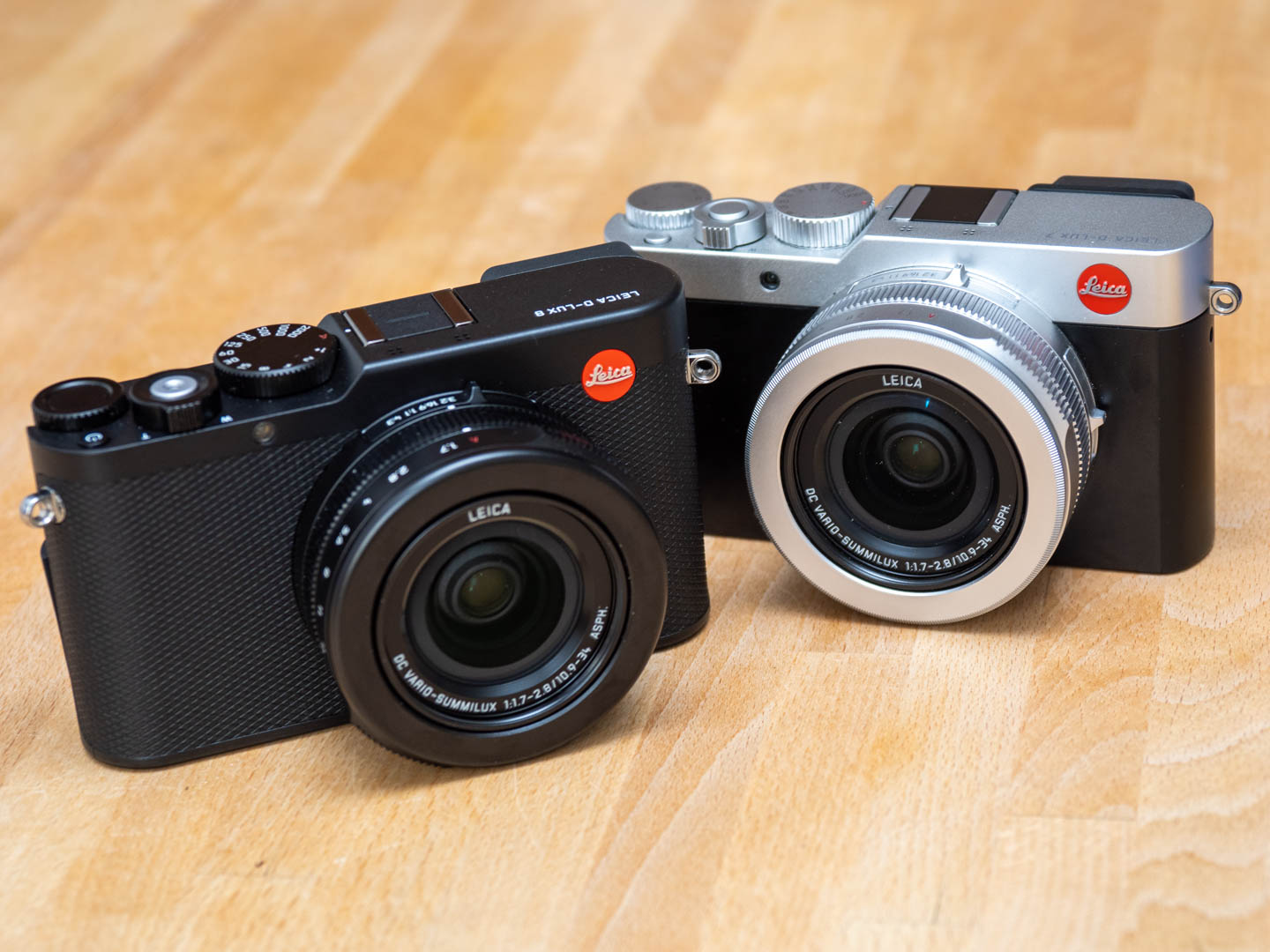




No step zoom !!!! Not good
My old canon G7xii has it and I use it a lot.
Add to that the lack of a “flippy” display ….. it becomes a breaker for me.
Too bad.
I’d happily pick up the 8
I got my D-Lux 8 a few days ago & like the design, but there are a few odd design choices & omissions that make it more fiddly than my other digital Leicas, including the much older Leica CL. Some have been touched on in this thread, but here are the things I’ve bumped into:
No Extended EVF option (EVF on when shooting, rear LCD on when using the menu or viewing photos)
Long shutoff time (up to 10s or so), maybe related to Leica Photos link?
No step zoom (zoom to 24mm, 35mm, etc)
Doesn’t return to last zoom position after power off
No operation lock (to avoid changing settings accidentally)
No way to auto-center the focus point
No way to transfer photos using USB-C (it’s only for charging)
I get that Leica is trying to reduce menu clutter, but dropping all of the above is hard to swallow when they have, for example, a menu item to adjust the color balance of both the viewfinder and the EVF, a thing I’ve literally never done on any camera.
Here’s hoping for some enhancements in a future firmware upgrade!
Thank you for adding more omissions. It really is strange and frustrating. As you say, some obscure features have been retained while important controls have been deleted. With a bit more intelligent choice, this could have been a great little camera.
I’ve been wanting to buy a D-Lux for a while now, just waiting for the right moment to get the money and make the decision. But I was very clear that I needed two crucial features: 1) assign the zoom to the focus ring when you’re in AF, and 2) disable absolutely all touch controls (I hate touch screens). The D-Lux 8 doesn’t have either of these two options, so I’m definitely not buying a Leica anymore. Thanks, Leica guys!
The absence of zoom assignment to the focus ring of the D-Lux 8 is infuriating and, in my opinion, evidence of non-users meddling in the design. I also agree on the lock feature. Leica has decided that this is unnecessary across the range and the more we ask for it, the more they indicate we are old fashioned and should accept their view.
Also missing: 4K Photo, Post-Fokus, Panorama
I keep being bemused by the marketing of the DL8 – ultimately it is like pushing an ultra-brand handbag – re-releasing a camera 5 years later with just an improved Menu system and the useless addition of a USB-C port. It just keeps adding more value to the Lumix LX.
I’d like to suggest that you write leica directly, if you feel passionate enough about the missing features at info (at) leica-camera.com
I did so and got a “thanks, we’ll tell the developers” e-mail back. I know that this means nothing all by itself, but enough messages might make them take note.
Another thing it seems to have lost… 1/4000. At least on the dial. I suppose 1/2000 is quite Essential enough.
Thanks. Another one to investigate.
still goes to 1/4000 (see manual)
But the dial, unlike the D-Lux 7, only goes to 2000. I can’t imagine why. Perhaps the 4000 setting didn’t have space when using the snazzy Leica font? Wetzlar didn’t put the A-Team on this one, clearly. Even if it does go to 4000, people are going to look at it, see 2000, and think that’s a bit tight for f/1.7 in full daylight….just baffling.
I’ve read somewhere in a d-lux 7 review (can’t remember where, but I might have read everything that ever was published about that camera 🙂 that the leaf shutter isn’t fast enough to flash-sync at all apertures at 1/4000. I think it was only at f6.3 and slower that the leaf shutter got out of the way fast enough. maybe this was reason enough for leica to get rid of the 1/4000 on the dial of the d-lux 8? but I agree, this camera feels much more marketing department driven than all their other offerings. a lifestyle thing. and apparently lifestyle doesn’t care about focal length.
The user manual says that 1/4000 is still the maximum shutter speed in mechanical mode. Don’t know why they put only 1/2000 on the dial.
I fully agree with you Mike, as a Leica DLux (Typ 109) owner I have used the Step Zoom function for years. I’ve never once disabled it since setting it up. The zoom lever is frustratingly erratic and finding a particular focal length wastes time and battery power. I was interested in a potential upgrade, but I will wait and see if Leica listens to their customers (the ones who keep them in business and employed) and issues a software update.
I suppose the next logical move is to remove the 24, 35, 50, 75 and 90mm engravings from the SL 24-90mm lens as non essential.
Ah! There is logic in that, since the actual figure doesn’t really mean anything. A W at one and and a T at the other should be enough for anyone. I agree on the erratic nature of the zoom lever on the D-Lux, though. I can’t think of another lens where a zoom lever is thought preferable to a zoom ring.
I got the D-lux 8 last Saturday and so far I’m impressed with its performance and handeling. Sure, I can’t compare it to the Q2 i’ve also owned. But it will serve me well as a everyday carry and holiday and family camera. I’m also surprised by the, let’s call it ommision on Leica’s behalf to not include the step zoom option in whatever way, shape or form on the D-lux 8. I’m totally on Leica’s page when it comes to it’s principles about Das wesentliche. But I don’t understand that they don’t include an essential part for this zoom camera. Especially when you take in mind that the Q, in all its itterations, has a function button that can be assigned to the crop function. And of course a Q is also build on the same princiiples. So, let’s hope Leica listens to its users and brings back the stepped zoom, either through the zoom lever, the lens ring or one of the function buttons. And, in doing so, the will not harm their own principles if you ask me.
The performance is excellent, the same as the D-Lux 7 as far as I can see. And I agree on the advantage of the new menu. My only concern is that the zoom functions have been omitted. If they were to reinstate these functions I would be a great fan of the camera. I think they would sell many more with just these small tweaks.
I’ll keep the pre-order of the leica dlux-8 and just hope that leica will see the light and bring “step zoom” and “zoom resume” (and also “step zooming” via the middle ring in the lens itself) back.
but it is still a curious german (I’m german myself) thing were the principle overrules utility for the sake of “purity” or “das wesentliche”. but this “one size fits all” approach just does not work with the only zoom lens camera in the lineup. it needs a little more finesse and grounding in reality.
Thank you for this information. I will now not buy this camera. I find being able to preselect a ‘focal length’ as essential.
Let’s face it, Panasonic was dropping the camera line that Leica had depended on for its point-n-shoot line up, and Leica took the easy way out. I am disappointed with Leica over the D-Lux 8, I was hoping for something new and they dropped the ball by releasing a cosmetic do-over that, as you’ve pointed out, loses some popular features. Maybe there was a left-over stock of parts in China that Leica was financially responsible for. I was hopeful a new camera would be forthcoming, but the D-Lux 8 is nothing I will give up my CL for.
I think you could argue this is a market test for Leica. If the DL8 is a success, despite only changes in UI, then they might see that as a green light to make DL9 a more advanced camera. Who knows maybe DL9 might be an MFT ILC using Leica branded lenses?
Thank you for highlighting the deletions of these features as I rely on these when using my Panasonic LX100 ii.
The step zoom is one of my favourite features and would make me think twice about purchasing the DLux8.
I have my name registered with Leica for stock updates on the DLux8 as I do like the camera package in terms of size, weight, lens and aspect ratio selector which provides a more involving picture taking process.
Shame that Leicas response was to rule out the option of adding these features as part of a future firmware update.
As a Q2 owner I also rely on the one button press to access the crop modes of 35mm and 50mm, so this is not too dissimilar to the step zoom function on the DLux7 and LX100
Perhaps I will stick with my LX100ii.
Good idea Vince – that’s what I am doing – staying with the LUMIX – a basic menu change is not worth $2.7k
I think the only real worthwhile change is using the Q3 menu system. The ones mentioned here equate to dumbing down the camera. The oiled viewfinder and more resolution on the screen are just pluses, but not that much more.
I’ve been using the original Panasonic LX100 for a few years and was contemplating replacing it with the D-Lux 8. However, I find the step zoom an essential feature that I use all the time. The lack of it on the D-Lux 8 is is a deal-breaker for me, and so Leica has lost me as a potential purchaser of that camera.
I am in exactly the same situation. I have 4 leicas but I won’t be adding this to the collection, in fact I think they made a dog’s dinner of it.
Great looker but outdated and functionally inadequate.
Thanks for the review – if Leica Product Management is by any chance reading this – and they most certainly should – I’m another customer you’ve lost due to this absurd dogma. You don’t get to the “essential” just by chopping random things off and charging a ridiculous price.
Thank you for this timely warning. I am also a long=time D-Lux user (5, 6, 6-1/2 and 7). Ordered the D-Lux 8 when it was first announced, assuming that it would be a simplified (but not ruined) version of the DL7. I’ve now cancelled that order. I cannot understand how Leica could be so inept and ignorant of what users want. I wouldn’t mind betting the decision maker in this instance has never seriously used a D-Lux 7.
I always use control ring for stepping zoom on DL7 and Canon G1X m3. I also use a button for ‘stepping crop zoom’ on Q2, X100V and GR3. Lost of this function on DL8 give me more reason to waiting next camera to buy. Thank you so much for excellent article.
I have had the Type 109 for 10 years and it’s a lovely travel camera when I don’t want to take my M with me – currently the M10P. I use the step zoom as lot as I tend to think in terms of 28 35 50 and 75. The lens ring alternative actually seems to be faster but the choice of both is great. I was looking to upgrade to the Dlux 8 but I am seriously rethinking this now with the news that these features have been removed
I have a DLux-7 and I enjoyed your review of its successor. It’s fascinating how we all use this camera in different ways. I’ve never used the step zoom, instead using the zoom, to frame the my image. Nor the function lock, mainly because I never knew it existed. I don’t use the USB port at all preferring to transfer images via the memory card. Having said that, I do appreciate that if you use a function consistently and someone takes it away, for no good reason, how frustrating that must be. What did strike me however was the alarming increase in price, from £995 (Dlux-7) to £1,450 (Dlux-8). For something has less features ! The DLux 109 was £895 on its release btw.
Anyway I’m going to spend the evening looking for the handy function lock ! Thanks Mike for that !
The zoom lever on my V-Lux 5 behaves erratically (no response, zoom in opposite direction) — something about contacts in a potentiometer. The control ring around the lens is the only reliable way to change focal length. (And yes, I also have it set to step zoom.)
Sounds like the D-Lux 8 was designed with me in mind. I didn’t use either feature when I had an LX100. In fact a main attraction of the LX100 was that most things I wanted to change while shooting where available via physical buttons. That said I wonder if I should cancel my order at B&H. My budget doesn’t support even this cheapest of Leicas. I sold a much loved X2 to partly fund the 8…..I think I need to go back to being a humble Panasonic shooter….
What cobblers!
I suspect that for any number of DL-5/6/109/7 owners these features have proved useful. You don’t have to activate if you don’t want to: they can lie dormant until you want them, or some future owner wants them.
This decision creates a sense of a myopic and insular organization making arbitrary decisions to suit themselves rather than buyers. I wonder whether this decision and its ramifications discussed all the way to Stefan Daniel? Did they talk to DL-7 owners about their opinion with regard to removing these features? I strongly suspect not…
I cannot believe that any member of staff at Leica who actually uses cameras and practices photography on a regular basis would think it was a good idea not to be able to select the focal length on the zoom or at the very least retain the step feature. As it is now, not only can you not choose the precise setting you want but you are wasting battery power toggling the zoom backwards and forwards struggling to find 35 or 50 or whatever focal length you want to use.
Leica: “This is due to prioritization of other features, we wanted to focus on the essential”.
Me: Dear Leica, being able to set the zoom to the required focal length IS the essential. Otherwise why have a zoom?
Me again: I understand that Leica is now making cameras designed not for photography but to look cute. For a compact camera with a zoom there needs to be a manually operated zoom ring but a 20- year old software designer with little experience would struggle to figure this out. The upshot of all this is the shock and realization that I will probably have to buy a different brand of camera now that I’m in need of a new compact. Leica seem to have scored three own goals recently, 1) the discontinuation of the CL, 2)The software problem with the SL3 deleting files and 3) the poorly implemented features of the new D Lux 8 which could so easily have been a great little camera with more intelligent design.
The power consumption you mention is worrying. So far, my experience has been that the battery life is poor. I will wait for a week or two, afeter several full charges, to see whether or not there is an improvement. But it isn’t encouraging. As you mention, having to fiddle with the zoom every time the camera wakes or is switched on uses power. With the D-Lux 7, would wake to a preset zoom, and this must be more power efficient — just one simple extension.
Even more power efficient, a simple manual zoom ring on the lens. Needs no power at all and takes about a second to set by hand just like the 24-70 on my SL2s body. Not everything needs to be powered. if Leica claims they want the operation to be more in line with the Q they should consider how well they implemented the macro / close up function on the lens of that camera. Simple and effective.Leica can do amazing things sometimes when they get it right.They definitely have designed a great menu system but a camera is more than that and must remain practical to use.The difference I suppose is that the Q was designed from the ground up but the D-Lux is in reality a comparatively old camera now with a new menu system pasted on.
Hi Mike,
A new Leica survey just popped up that asks good questions about the Leica UI. I hope everyone here fills the survey out, as it might actually mean Leica wishes to act upon owners’ frustrations.
J
Do you have a link for us? I will need to approve it, but I will do so straight away.
It was sent via email to me, and also posted on Leica Camera forum. I will forward my email to you directly.
I filled out this, but I was in and out in about 2 minutes. I explained that I had about 50 Leicas, but nothing that was on the list. Someone who had an SL2 said that it took them 15 minutes to fill out the survey, which might explain why I don’t have an SL2! Mechanical controls which are visible are the essence of ‘Das Wesentliche’ and Leica. Messy battery eating controls are not and menus are for restaurants. The team in Wetzlar need to get their heads around all of this.
William
“Deliberate decision”. Whoever made these decisions doesn’t serve to be let loose on anything in the future. The smugness and “we know best” of the response staggering. I’m also now going to order the X100 from a company that understands what photographers want. Rainer
I have the Lumix LX100ii – it’s a great cam to sneak into concerts with good 4k video. I wondered if the DL8 would be a step up.
But same sensor and then I also realised there is no step Zoom (ESSENTIAL!) and after providing a USB-C port – no ability to “cable” download files straight from the camera – who was responsible for this omission?
I keep repeating Leica has to one day actually listen to photographers not engineers.
I just saved $2.7K.
Thanks for mentioning the USB-C port… something else I hadn’t realised and it will be added to the ever-growing list. This camera is turning into a real Calamity Jane. Unfortunately I had to find out the hard way, by buying it last week. I wish I’d waited for a press demonstrator. Fortunately readers can now make up their own minds whether or not they want to cancel their orders.
Mike
Yes, the marketing and PR department for sure, not the engineers.They are likely frustrated too.
Hi, it is not engineers that make feature and design decisions- it is product management.
Excellent points Mike, I recall the lock feature being part of your rationale for selling the CL.
Very frustrating and stubborn stuff from Leica, it’s almost like they are happy to alienate a whole chunk of their customer base, and potential customer base.
Thanks for the heads up on this, Mike. I agree with everything you say and I’m disgusted with Leica over this. I owned a D-Lux 7 (but sold it a couoke of years ago) and just assumed that the zoom controls would be carried forward. I’ve already cancelled my order and have joined the list for a Fuji X100VI. Alan
Me too. You’ve just saved me a big mistake. I’ll keep my D-Lux 7 for now. What on earth are they thinking about?
B-b-but, Alan, the Fuji doesn’t zoom AT ALL..!? (It’s forever stuck at 35mm (equivalent).)
Of course I know that, David. I want a small compact camera and have considered the Fuji, Ricoh and, of course, the Q3 (which I can’t justify on cost alone). A four-thirds sensor wouldn’t be my first choice, but the optical zoom adds versatility and, having like the DL7 I thought the DL8 might be a good choice. However, it seems it isn’t, and I’ll consdier a fixed lens camera instead,
I have the DL7 and recently got the DL8. I agree completely that the now-absent zoom settings as described above are a considerable loss to the functionality. I have fiddled with the FL8 to see whether the control ring will zoom as before, but no luck on that. In some ways, I felt that the control ring was perhaps more useful for zooming, as I preferred turning that to pushing the lever.
Same thing with the operation lock, for which Leica’s explanation is not very convincing. I have a CL, a TL2, an SL2-S and a Q3, and the randomly-moveable point really needs fixing across the range, and its absence there doesn’t justify taking it from the DL8.
The other thing which I did find useful, but which will probably make the PP “stitch it together” purists laugh, is the DL7 panorama feature. If you happen to be miles away from processing software, but want to produce a reasonable panorama shot and be able to check it’s OK, it was an excellent, if only occasionally used thing.
My main reason for getting the DL8 was indeed the simplification of the menus and their operation, and their alignment with other Leica cameras. I don’t miss the forest of menu options of the DL7, most of which I didn’t use or change, but it seems a pity that Leica didn’t ask a few more people what they might want from the 7 in the 8. I expect that is because the Leica version of the LX100II was derided by many and shunned as a sort of toy camera, whilst the DL8, with its miniature Q3 disguise, has suddenly become more obviously “Leica-ish” in looks and software.
This is one of the things which I just do not understand.
Many people say, of various cameras ..comparing them with the latest Leicas.. “My main reason for getting [such and such] was indeed the simplification of the menus..” ..but then say in the same breath, of other cameras’ menus “..I don’t miss the forest of menu options … most of which I didn’t use or change”.
So if one doesn’t use or change the menu items which are irrelevant to one’s own use ..why bother changing cameras just to get rid of the menu items which one doesn’t use?
It’s like saying “My car had ashtrays, which I didn’t use, so therefore I changed it to get a car which doesn’t have ashtrays”.
Many cameras have a ‘My Menu’ option, or similar, in which you store the menu items which you DO use, so you can avoid seeing so-called ‘irrelevant’ items. (The DL-8 seems – according to its instruction book – to have a ‘Favourites Menu’ which is probably similar ..except that in the really dire D Lux-8 instruction book I see no mention of how to actually reach or store items (apart from images) in its Favourites Menu.)
If I don’t need to use a Menu item ..then I don’t use it. Boycotting some camera(s) because of ‘too many menu items’ and opting for only a camera which has ‘far fewer menu items’ always seems ..what’s the nicest way of putting it?.. incomprehensible ..to me, anyway.
I think the point I was makingin the article is that control over zoom function on a camera with a fixed-zoom lens is pretty basic. What Leica has done is leave the zoom as it was on the the D-Lux 7 but removed the controls that made it so enjoyable to use.
That zoom is now like a rudderless ship, reliant on a remote Wide/Tele lever which is a pain to use. The menu system is very basic and, I suspect, many other adjustments available on the DL7 have been omitted.
It’s actually a nice menu, but they really should have had just one more line to allow users to choose how they want to pilot that zoom lens.
Oh yes, I understood that the intermediate ‘steps’ on the zoom have been abandoned ..I was writing in more general terms about people getting all worked up about having ‘unnecessary’ menu items which they don’t use, but which they seem to find annoying by just having them present.
As Jon Cheffings says, above, “..they can lie dormant until you want them, or some future owner wants them”.
(But I do find it to be a very unfriendly and complex instruction book. It’s a pity they don’t get native English speaking photographers to write – or check – the manual before signing it off.)
With respect, I’m not worked up about ignoring menu items on any brand of camera (or computer, smartphone etc). I like the simplicity of the new style of Leica software, which gives me what I want with minimal navigation, and is WYSIWYG without having to turn a blind eye. I have little interest in video and would happily do without. If I feel a need to grind through Panasonic menus, including user defined ones, I can always pick up my S5 or even grab my MFT GF2.
Writing instructions – books, directions, whatever – seem frequently to be done by the engineers or some official person who is already familiar with how things work.
If you asked someone who had not written the software or hardware instructions to write instructions for the end user you might get something more user-friendly.
The same challenges arise with directions around museums, airports, hospitals and zoos, for example. The directions are written by people who work there, not people who come for a day, or an emergency or who are late for their flight. Try giving directions to somewhere you are familiar with to a stranger and then notice how much you left out…
You need different thinking from the end-user perspective.
David, having shot Sony and DLux 7, I for one, did not appreciate the complexity of the menues. Here are a few issues I had:
1. To set the MyMenu, you still have to know the individual menu items… complexity remains an issue.
2. The joy of non-documented inter-related menu items where setting one option limits your ability to set another option value… with no explanation.
3. The sense that I have to program the camera so it can take the image, rather than me taking the picture after setting the essential parameters manually, or with just a little help. And programming the camera on a 3” screen isn’t pleasant either.
I recognize I maybe alone in my aversion to highly complex menues. I simply want an enjoyable shooting experience. Those menues destroy the enjoyment for me… just like a camera with too many custom buttons all over it. These tools are just too complex for non-professionals who use cameras more occasionally than a pro who uses the complex tool very frequently.
“Those menus destroy the enjoyment for me”
Yes, I feel the same.
You want to be looking at the subject you are photographing as much as possible and looking at menus as little as possible. But in this respect we can say Leica have done much better than most.
.
Rudiger,
You say that you don’t like “..The sense that I have to program the camera so it can take the image, rather than me taking the picture after setting the essential parameters manually”.
But you DON’T “..have to program the camera..” if you don’t want to!
Just set whichever camera you’re using to ‘M’ ..for ‘Manual’. Then you needn’t do anything except “..taking the picture after setting the essential parameters manually”.
When the camera’s set to ‘M’, just choose your shutter speed, choose your aperture – and maybe choose your ISO, and maybe your over- or under-exposure – just like on any basic film camera, or basic digital camera ..snd shoot whatever you want!
IF the photos don’t come out the way you wanted ..too dark? ..too pale? ..too blurry because of the wrong shutter speed?.. just have a think about what may have gone wrong, change ONE SETTING ONLY, and try again.
Some cameras come with – or have available – a huge range of different lenses ..but you don’t have to use or buy them all. Just choose and use the one, or ones, which appeal to you ..they’re just options. Lots of firms make scores of different camera straps ..but you don’t have to choose or use them all.
Same with the options in camera menus: you don’t need to bother with any except the most basic. Then set them and forget them.
You don’t have to try EVERYTHING that’s on a restaurant menu. And if a customer doesn’t know what the fancy wording on a restaurant menu means (‘œfs en cocotte’, let’s say) they’d just ask a waiter “what does this mean?” ..similarly, one can easily look online to see what a particular item in a camera menu is for.
But generally ..just ignore camera menus, set the camera to ‘A’ (Automatic) to start with ..and shoot! Or set it to ‘M’ ..and just shoot, and see what you get. It costs nothing to shoot, and then delete, ‘failed’ photos ..and what you gain is ..experience!
There should really be an introductory page in all camera manuals saying ‘YOU DON’T HAVE TO BOTHER WITH ANY OF THIS’. Just charge up the battery, put in a memory card, switch the camera on, set a medium shutter speed – like, say 1/125 – set a medium aperture – if it’s not settable on the lens, then just twiddle a few dials till one of them DOES seem to adjust the aperture to about f8 ..then squeeze the shutter button and off you go ..and see what you get!
Just try “..setting the essential parameters manually..” as you want to do. See what you get, and if you want your photos to look different from that, THEN start reading to see what can be adjusted, and how, or why.
Mike – our Editor – wanted a camera which doesn’t give the option to ‘chimp’ ..to look at photos immediately after they’ve been taken.. so he bought a (more expensive) Leica with no screen on the back! But if I don’t want to look at what I’ve just shot ..well, I’d just stick a piece of cardboard on the back of the camera’! ..or just simply not look!
You don’t HAVE to use menus, unless there’s something which you really want to change ..then look up (in the camera’s instruction manual, or look online) to see what to select in order to change that one item. Otherwise, IGNORE what’s in menus.
Film cameras generally didn’t have menus; you just pointed and clicked! You can do the same with any digital camera ..but menus are there for those who want to investigate what cane be altered to the photographer’s own taste.
I’ve a whole load of different shirts in the cupboard: but I don’t have to choose every day which colour to wear, whether with long sleeves or short, with or without a breast pocket, with a pattern or just plain, with holes for cuff links or just with buttons, with a set of sleeve buttons (for rolling back the sleeves) or without, with loose enough cuffs to accommodate a chunky watch or without ..etc, etc. I just glance at the weather, think what I’m doing that day, then reach in the cupboard, and choose one. Done!
There’s no need to be a slave to menus ..just set the camera to Manual ..and learn as you go along!